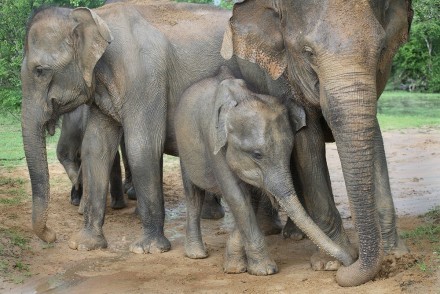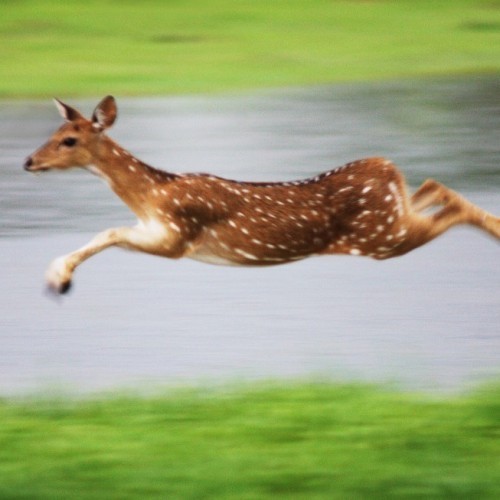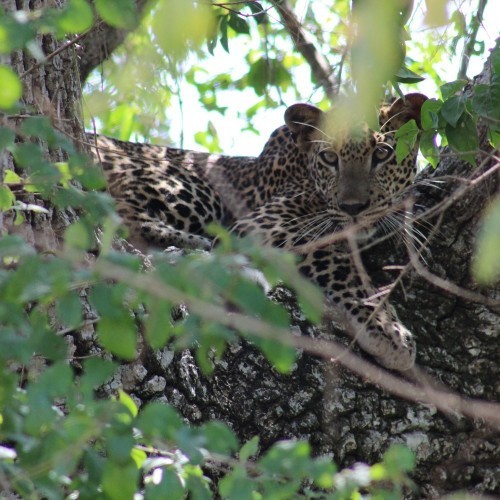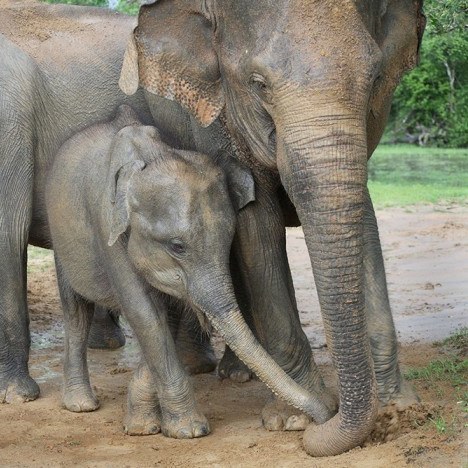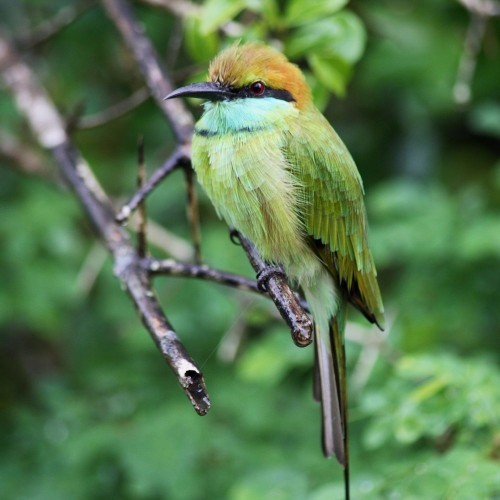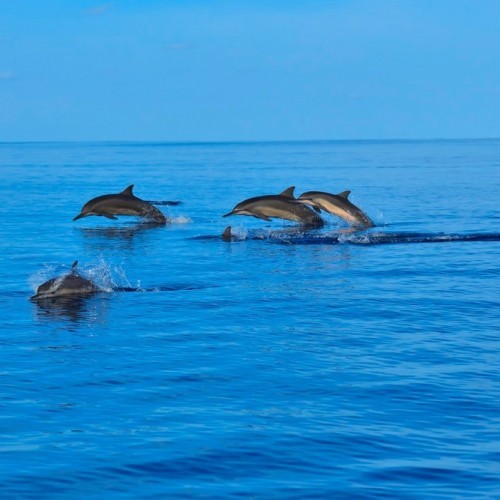Price
From £2,390 per person.
Includes B&B or H/B accommodation, a/c transport with chauffeur guide, exclusive jeep safaris, entrance fees & activities, and taxes.
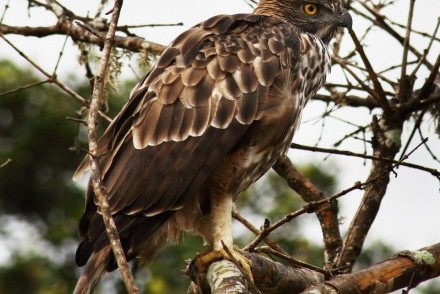
Arrive Colombo airport and greeted by your dedicated Tikalanka chauffeur guide.
Drive northeast to Habarana, the 'crossroads' of the island’s Cultural Triangle.
Two nights stay at Galkadawala Forest Lodge, which is an open-plan forest lodge built sensitively with its natural surroundings and nestled in ‘jungle’ near a picturesque lake. It is a unique property in a stunning setting with an eclectic charm at every turn, an ideal retreat for nature lovers.
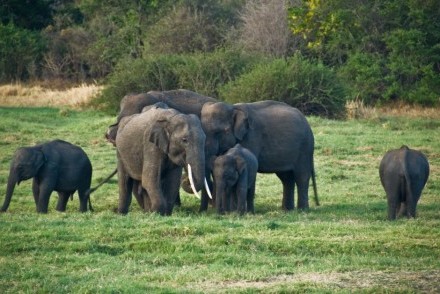
At leisure in the morning. Suggested sightseeing trips and activities (NOT INCLUDED IN PRICE):
- Early morning (07.15) field session of the ‘Monkey Tour’ run by The Smithsonian Primate Research Station at Polonnaruwa.
- Visit Popham’s Arboretum near Dambulla, which is the island’s only ‘dry zone’ Arboretum, home to a great variety of trees, birds, butterflies, dragonflies and mammals. A highlight of a visit is a 'Night Safari' hopefully to spot the rare Grey Slender Loris – please ask us for details.
- Early morning (07.00) ascent of the rock fortress of Sigiriya to view the surrounding countryside at dawn – a very special experience indeed.
- Climb gently up the granite massif at Dambulla to visit Sri Lanka’s finest cave temples.
- Guided tour of the medieval capital of Polonnaruwa, with its historic temples and exquisitely carved statues.
In the afternoon, enjoy a jeep safari in Minneriya National Park, which is part of an ‘elephant corridor’, along with Kaudulla NP, for the vast herds roaming the eastern region of the country from Trincomalee through to Wasgamuwa, Maduru Oya and Gal Oya NPs further south. The park is home to a variety of animals such as elephants, leopards, toque macaques, purple faced langurs, sloth bears, sambar and spotted deer, and about 160 bird species, including many endemics.
Minneriya is home to the ‘gathering’ between August and October, when large herds of elephants congregate around Minneriya Lake to seek the last available water at the end of the dry season.
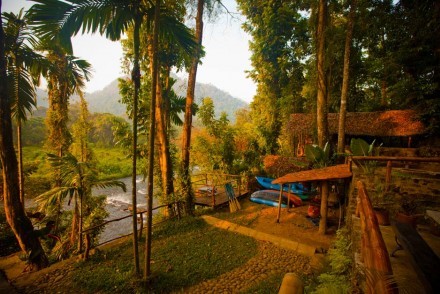
Continue to Kitulgala in the foothills of the western Hill Country. Southwest of Kandy and north of Adam's Peak, Kitulgala hugs the Kelani Ganga (river) as it meanders through the Sri Lankan 'jungle'. Made famous by the Oscar-winning epic Bridge on the River Kwai, which was filmed here in 1956 by Sir David Lean, Kitulgala is now a popular area for nature walks and bird watching, and it is one of the few places in Sri Lanka where white-water rafting is possible.
Two nights stay at Borderlands Eco Lodge, which provides eco lodges and a jungle camp overlooking the Kelani River. This is a rustic ‘glamping’ experience for those who need a certain degree of comfort. Surrounded by mountains and the clear, rushing river below, the site is truly stunning.
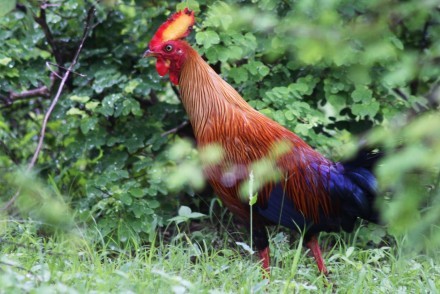
A half-day hike through Makandawa Rainforest Reserve, a spectacular area of jungle-clad hills and plantations growing low-country tea and rubber, which was established to protect the watershed of the Kelani River. Similar to Sinharaja, the lowland rainforest around Kitulgala is one of the best spots to see endemic bird species on the island. For example, the Sri Lanka hill munia, chestnut-backed owlet and Sri Lanka small barbet are all resident here, and the green-billed coucal is certainly easier to see at Kitulgala than in Sinharaja. Other birding highlights include the Sri Lanka orange-billed babbler, black eagle, scarlet minivert and blue magpie. (packed lunch provided)
Suggested sightseeing trips and activities (NOT INCLUDED IN PRICE):
- Activities available at Kitulgala include white-water rafting, canyoning, flat-water & white-water kayaking, canoeing, hiking, and mountain biking.
- Visit Belilena Cave, one of the larger prehistoric caves on the island, where the 30,000-year-old skeletal remains of 'Balangoda Man' (Homo sapien balangodensis) have been found in addition to microliths, bone implements, and food remnants.
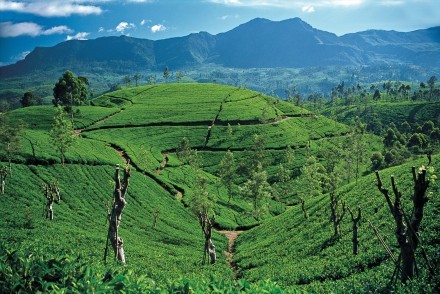
Head into the upper Hill Country, following the winding, vertiginous roads through the velveteen slopes of verdant tea plantations and past spectacular waterfalls and impressive mountain scenery on your way to Nuwara Eliya, the British colonial capital of the Hill Country and the highest town in Sri Lanka at 1900 metres above sea level.
On arrival, visit Victoria Park, which is a particularly good area for spotting Himalayan migrants (Kashmir flycatcher, pied thrush, Indian pitta and Indian blue robin) and Sri Lankan endemics (yellow-eared bulbul, Sri Lanka white-eye and dull-blue flycatcher).
One night stay at Jetwing St. Andrew's, which is a restored Georgian style upcountry mansion and former tea planters’ club surrounded by terraced lawns and still preserving the charm of a bygone colonial era with its typical Hill Country atmosphere in the heart of ‘Little England’ with a contemporary Sri Lankan touch. The hotel also offers a Frog Watching Tour with the resident naturalist for a night-time scout for amphibians – NOT INCLUDED IN PRICE.
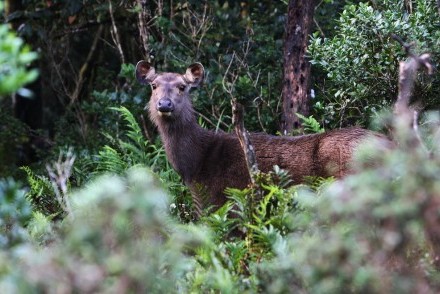
Early morning (07.00) trek through the heath and forest of Horton Plains NP, via Baker’s Falls, in time to see the awe-inspiring views at World's End before the cloud sets in – circuit is approximately 9 km in length along rough and uneven trails, including a few moderate climbs, which may offer challenges to people with mobility issues. Horton Plains is a particularly good area for spotting endemics, including: Sri Lanka whistling thrush (endangered), Sri Lanka bush warbler, Sri Lanka blue magpie, black-throated munia, orange-billed babbler and dull-blue flycatcher.
Continue to Ella in the southern Hill Country.
One night stay at 98 Acres Resort & Spa, which is a luxury retreat with spectacular views in an idyllic location at the southern end of the Hill Country. Surrounded by the eponymous scenic tea estate in Uva Province, it was constructed with the emphasis on eco-friendliness and sustainability.
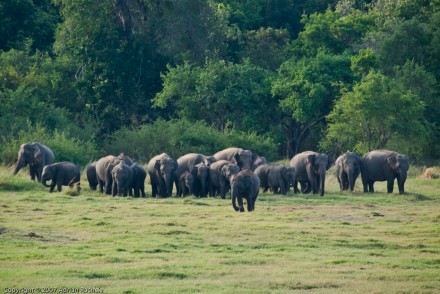
Drop down to the hot and dry southern plain before continuing to Udawalawe.
Two nights stay at Kalu's Hideaway, which is nestled in a beautifully manicured garden of two hectares, including raised organic vegetable beds, swimming pool and spa. This rustic countryside hotel is close to Udawalawe reservoir and surrounded by lush woodland and paddy fields typical of a Dry Zone farming community.
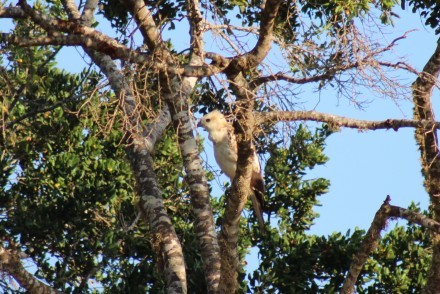
Early morning (06.00) AND afternoon (15.00) jeep safaris in Udawalawe National Park, which is renowned for its outstanding scenic beauty and wealth of animal species, particularly mammals and birds. The park is centred on the large Udawalawe Reservoir, fed by the Walawe Ganga that originates in the southern Hill Country. Of all Sri Lanka's national parks, this best rivals the savanna reserves of Africa, with herds of elephants, wild buffaloes and sambar deer, and leopards. There are about 500 elephants in the park in herds of up to 100 individuals. Udawalawe NP is known to be the best place to see wild elephants in Sri Lanka, because of the elephant-proof fence surrounding the reserve, which prevents elephants from getting out and cattle from getting in. There are also populations of spotted and barking deer as well as wild boar. Other mammals include toque macaque and common langur monkeys, silver-backed jackals, sloth bears, toddy and civet cats, and mongooses. For bird watchers, there are large numbers of warblers, together with the usual low country birds in forested areas, and a variety of raptors. Water birds found on the reservoir include rare visitors and breeding residents such as the Indian cormorant and osprey. Notable endemic species are the Sri Lanka spurfowl and junglefowl, Malabar pied hornbill, Sri Lanka grey hornbill, and the brown-capped babbler.
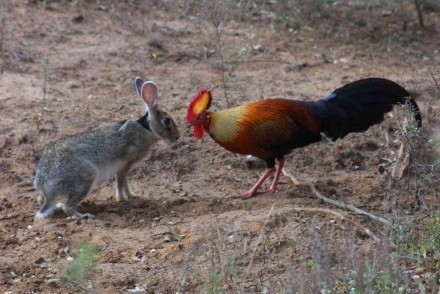
Continue southeast to Tissamaharama.
Two nights stay at Kithala Resort, which is set in peaceful, leafy grounds, including a swimming pool, and surrounded by paddy fields and attractive countryside home to an array of birdlife, hence its name – kithala or purple coot. It is conveniently located for arranging jeep safaris in Yala, Bundala and Lunugamvehera National Parks.
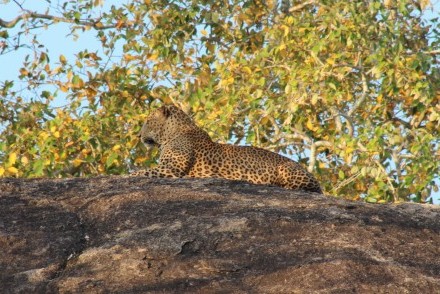
Early morning (06.00) AND afternoon (15.00) jeep safaris in Yala National Park, which is one of the island's best-known reserves and one of its largest. This Dry Zone region mostly has arid thorn scrub, interspersed with small dusty glades – the ideal habitat to view elephants, Sri Lanka's largest mammal. The park does have a varied landscape, however, from parkland to dense jungle on the plains, scrubland with rocky outcrops and several streams, small lakes and lagoons. The picturesque ocean frontage to the east has wide beaches and high sand dunes. A former hunting reserve, which was transformed into a nature park in 1938, Yala NP, also called “Ruhuna”, is currently home to over 390 elephants, several of which are tuskers, and about 120 leopards, reportedly the highest density of leopards in the wild anywhere in the world. Watching elephants go for their bath at sunset or seeing leopards laze about on the rocks at dusk are the most popular natural spectacles at Yala NP. However, you may also see other species of mammals such as sambar and spotted deer, wild boar, buffalo, musk deer, black bear, the unique small Loris, toque macaque and langur monkeys, jackal, mongoose, porcupine, civet cat, anteater, and the enigmatic sloth bear. Over 200 species of birds have been recorded in Yala NP, including the Sri Lankan junglefowl, white-bellied fish eagle, painted stork, black-necked stork, lesser adjutant, pompadour green pigeon, orange-breasted green pigeon, brown fish owl, red-faced malkoha, three species of bee-eaters, and large numbers of waders (including three species of pratincole and two thick-knees).
IMPORTANT – Yala NP (Block 1) is closed from 01 September for up to 2 months annually as a respite period for the animals and environment at the end of the dry season.
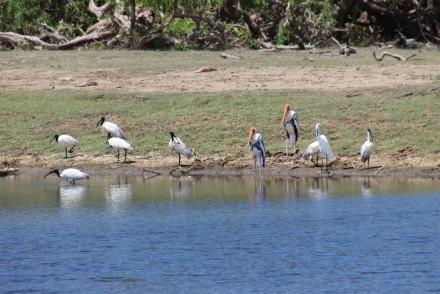
Early morning (06.00) jeep safari in Bundala National Park, which is the first Ramsar site (wetlands of international importance) in Sri Lanka and it is the most significant wetland for birds on the island outside of Northern Province. The shallow, brackish lagoons and saltpans of the park are among the most important overwintering areas for migratory shore birds in the country. This bird sanctuary is home to every species of water bird resident in the country. The rare black-necked stork is said to be a breeding resident in Sri Lanka. Vagrants turn up occasionally including the capion plover, ringed plover, common redshank, red knot, red-necked phalarope, common avocet and various sandpipers. The forest still harbours elephants as well as toque macaque and common langur monkeys, jackal, leopard, fishing and spotted cats, mongoose, wild boar, mouse, barking and spotted deer, sambar, black-naped hare, Indian pangolin, porcupine, mugger and estuarine crocodiles, common monitors, star tortoise, and pythons.
Head west along the picturesque and cove-sprinkled southern coastline to Mirissa.
One night stay at Villa Atulya – Ocean's Edge, which is a home-away-from-home on the beachfront, with five ocean-facing, spacious air-conditioned rooms in each villa. The two villas are located on a quiet beach where the Indian Ocean laps at the edge of the property and local fisherman offer their catch at the door. There are rock pools full of colourful fish to explore and long stretches of beach for leisurely walks at sunset. On moonlit nights, turtles from the deep visit the sandy beach nearby to lay their eggs.
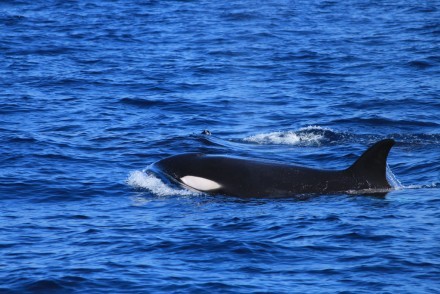
Early morning (06.30) boat safari off the south coast from Mirissa hopefully to spot Blue Whales, the largest animal on Earth! Sperm, Humpback and Orca Whales as well as large pods of dolphins are also potential sightings. IMPORTANT - Season from November to April.
Continue west along the south coast to Galle, famed for its exquisite Dutch colonial era fort.
Two nights stay at Fort Bliss, which is a comfortable four-bedroom town villa with courtyard garden and sit-out veranda within the Fort. Elegantly furnished and built in harmony with the original colonial Dutch architecture of the 17th century, it is located only a few metres from the famous ramparts.
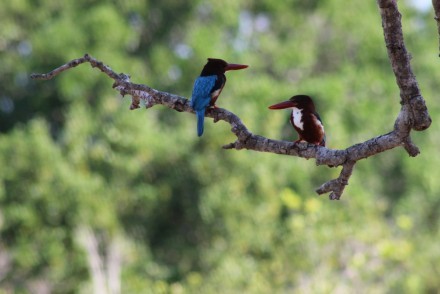
Early morning (07.00) boat safari through the mangroves and lush vegetation along the Mahamodara River near Galle, which offers great opportunities for spotting birds, butterflies, monitor lizards, and much more! A variety of water-borne birds can be seen including purple and grey herons, large and little egrets, Indian shag, and white-breasted, common and Indian-pied kingfishers. Among the forest dwelling birds are the spotted dove, pompadour green pigeon, drongos, bee-eaters, parakeets, coucals, and barbets. The birds of prey include the Brahmini kite, white-bellied sea eagle and the tank eagle.
Suggested sightseeing trips and activities (NOT INCLUDED IN PRICE):
- Guided walking tour of the Dutch fort at Galle, a UNESCO World Heritage Site. Amble around the ramparts and stroll through the Arab Quarter.
- Guided cycling tours of the paddy fields and local villages around Galle.
The following day, transfer to the airport for your flight home.
